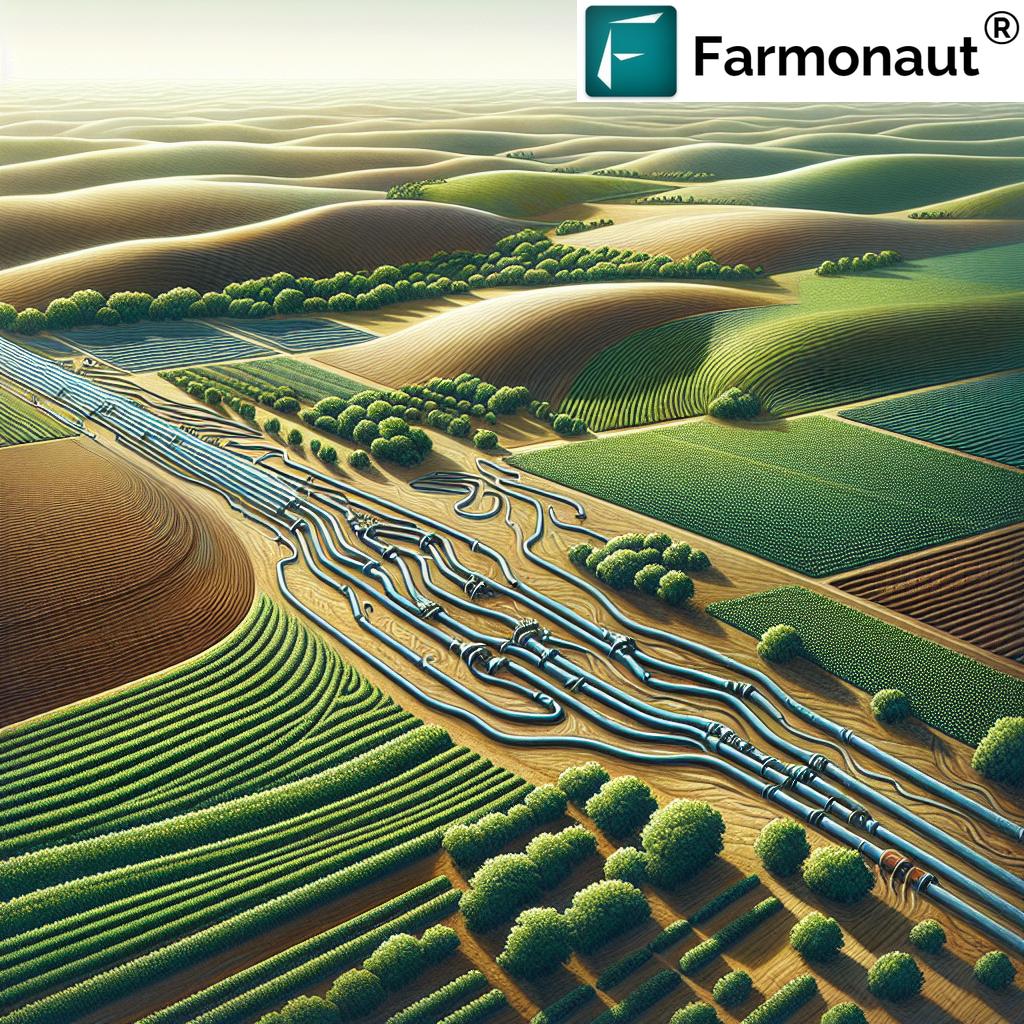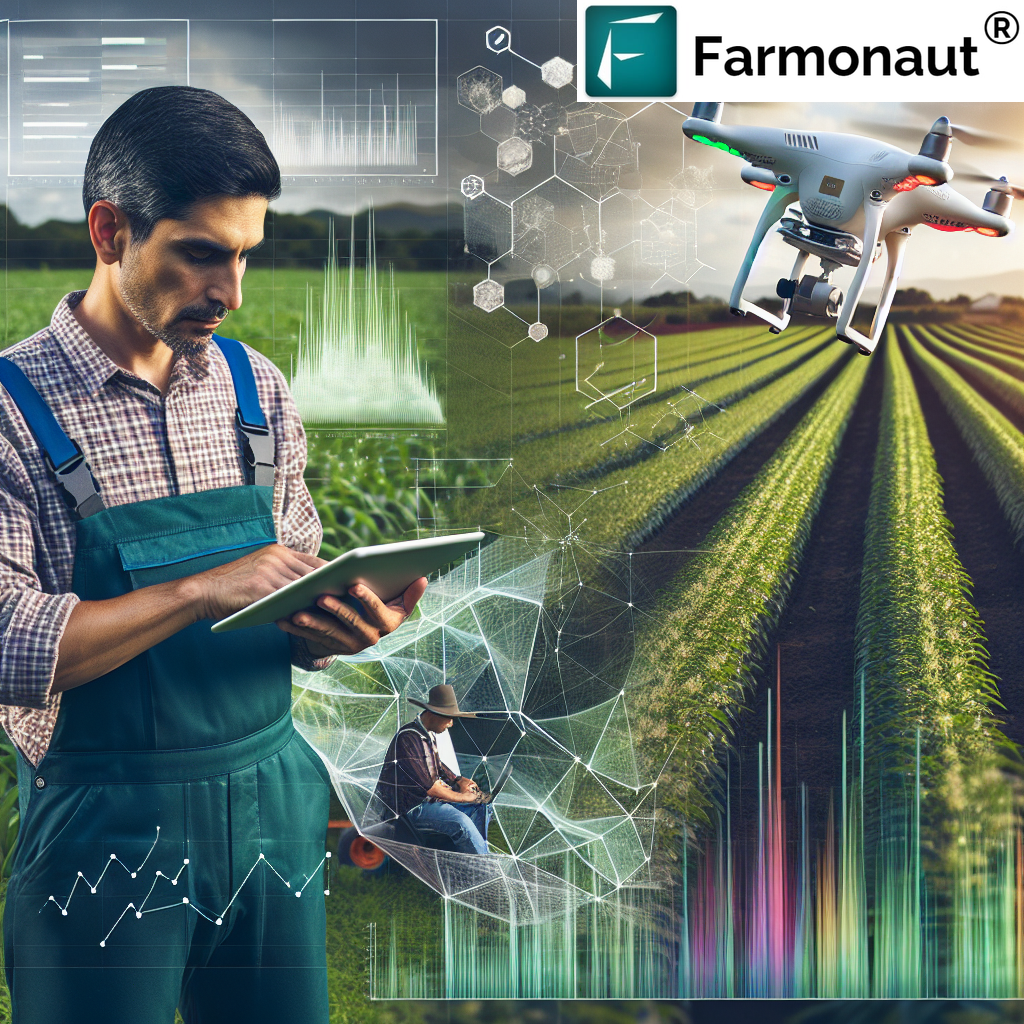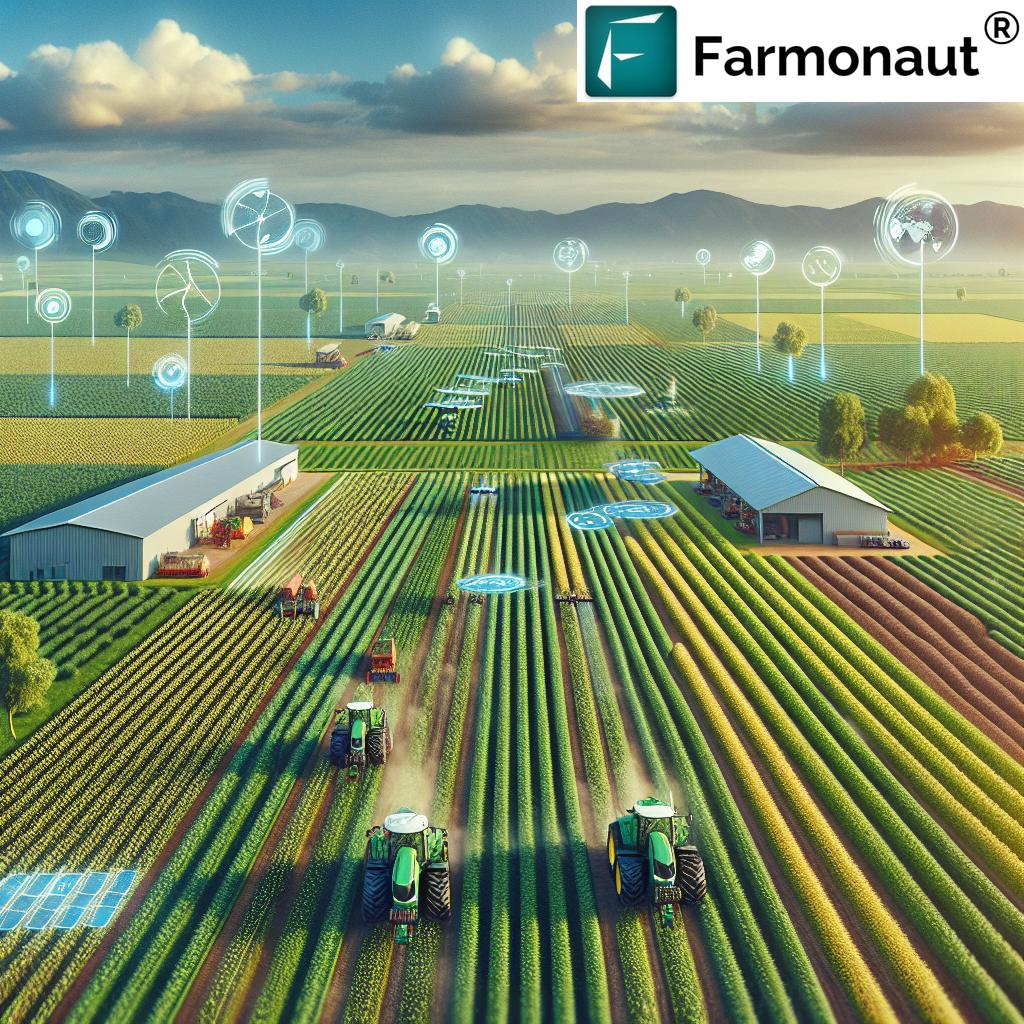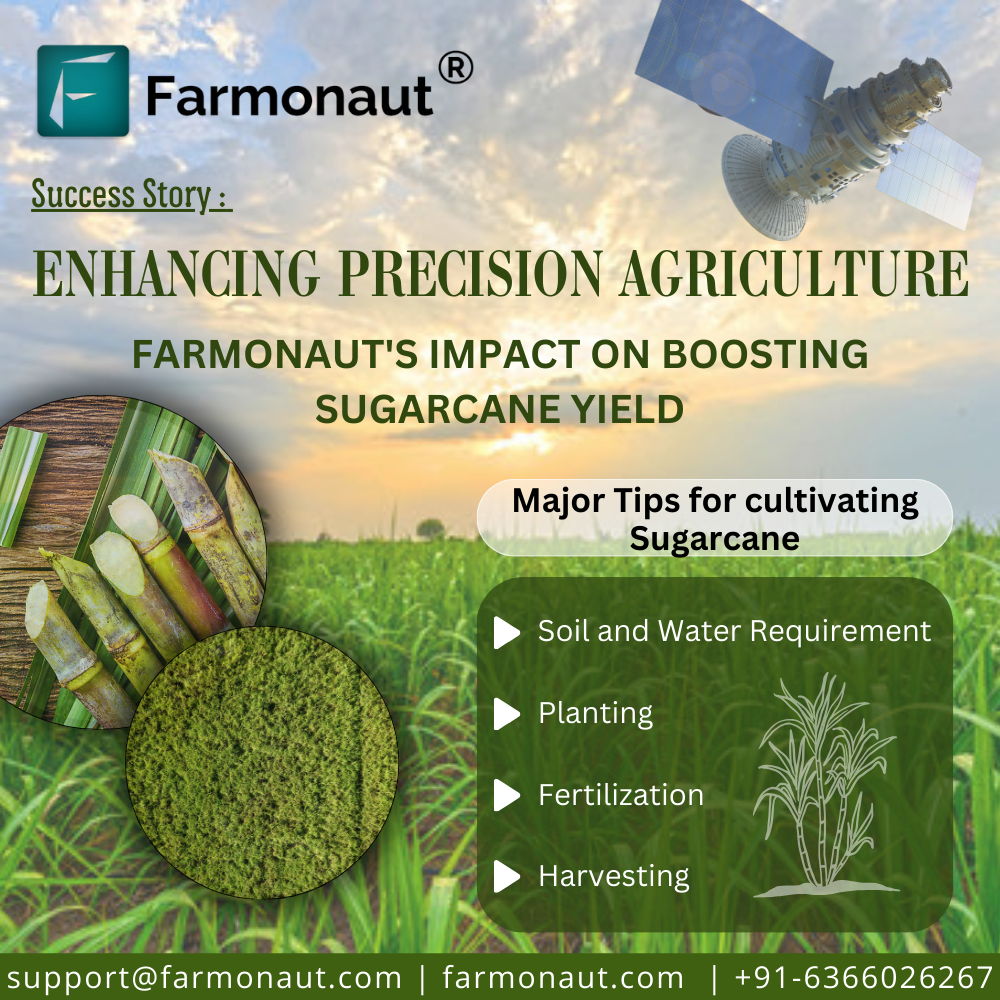Aerial Crop Spraying Equipment: Top 7 AI Farming Tools Revolutionizing Precision Agriculture in 2025
“In 2025, over 60% of large farms will deploy AI-powered aerial crop spraying equipment for precision agriculture.”
“The top 7 AI farming tools can reduce chemical usage by up to 30% through targeted aerial application.”
Table of Contents
- Summary: Advancements in Autonomous Aerial Crop Spraying Equipment – 2025
- The Rise of Aerial Crop Spraying Equipment in Modern Agriculture
- Precision, Efficiency & AI Integration in Field Operations
- Top 7 AI Farming Tools for Aerial Crop Spraying – 2025
- Comparative Table: Features & Performance
- Smart Integration: Data Analytics, Drones, and Satellite-Driven AI
- Environmental & Economic Benefits of Aerial Spraying Equipment
- Challenges & The Future of AI-Driven Aerial Spraying Equipment
- Farmonaut’s Role: Satellite Technology for Sustainable Agriculture
- Frequently Asked Questions (FAQ)
- Conclusion: Transforming Farming with AI & Autonomous Equipment
Summary: Advancements in Autonomous Aerial Crop Spraying Equipment – 2025
The aerial crop spraying equipment sector is experiencing unprecedented advancements as we enter 2025. AI farming tools and autonomous machines are redefining the approach to precision agriculture, targeting rising challenges of sustainability, environmental preservation, efficient resource usage, and productivity enhancement. By leveraging cutting-edge AI farming equipment, drones, unmanned vehicles, and satellite-driven data systems, modern agriculture is now equipped to address traditional limitations in spraying, crop health assessment, chemical application, and operational efficiency—delivering a new level of environmental and economic benefits across the globe.
Read on to discover how the top 7 AI-powered solutions are revolutionizing aerial herbicide spraying, autonomous crop management, and field operations, and how we at Farmonaut are empowering the sector with affordable, real-time, and data-driven insights for every farm, big or small.
The Rise of Aerial Crop Spraying Equipment in Modern Agriculture
The agricultural sector is undergoing a technological renaissance—a transformation driven by the urgent need to increase productivity, reduce environmental impact, and improve resource efficiency. Among the most advanced innovations reshaping modern farming is aerial crop spraying equipment. These solutions—led by autonomous drones and AI-enabled vehicles—are rapidly replacing traditional crop spraying techniques.
- Traditional methods are often reliant on large, manned aircraft or ground-based machinery.
- They face challenges like uneven chemical distribution, environmental contamination, high labor and operational costs, and significant safety risks for operators.
- Autonomous aerial crop spraying equipment addresses these issues by combining robotics, artificial intelligence, and the core tenets of precision farming, revolutionizing the crop spraying process from field to field.
By 2025, these autonomous systems are not just a technological curiosity—they are proving indispensable, with over 60% of large farms globally integrating some form of AI-powered aerial spraying equipment into their operations.
Precision, Efficiency & AI Integration in Field Operations
The major driver of adoption for aerial crop spraying equipment in 2025 is precision and efficiency:
- Equipped with multispectral imaging, machine learning algorithms, and sensor technology, AI farming equipment can detect weed infestations, pest outbreaks, and nutrient deficiencies at the plant or zone level.
- This allows for site-specific, targeted spraying—eliminating the outdated “blanket coverage” approach of traditional systems, which leads to significant chemical waste and environmental runoff.
- Aerial drones and unmanned vehicles can operate in difficult landscapes—steep hills, muddy or water-logged fields—where traditional machinery may struggle or cause crop damage.
- Sprayers equipped with AI can rapidly cover large fields, drastically reducing the time between crop assessments and vital interventions.
This fusion of precision agriculture and artificial intelligence increases yields, reduces environmental impact, and boosts economic returns—delivering transformative benefits for both small family farms and large-scale agribusinesses.
Top 7 AI Farming Tools for Aerial Crop Spraying – 2025
Let’s explore the top 7 AI farming tools set to dominate and inspire the aerial crop spraying equipment market in 2025. These next-generation solutions combine robust hardware, cloud-based intelligence, and software-driven analytics to optimize every aspect of spraying, resource utilization, and field health management.
-
AgriSpray Pro X+: Fully Autonomous UAV Sprayer
- AI Capabilities: Real-time disease & weed detection, automated route planning, dynamic in-flight spray adjustment.
- Best For: Large row-crop fields, precision herbicide application, time-bound pest outbreaks.
- Notable Feature: Multi-battery quick-swap system for uninterrupted spray missions.
-
DigiHerb Precision Drone
- AI Capabilities: Multispectral crop health analysis, area-specific herbicide calibration, weather-adaptive spraying schedules.
- Best For: Vegetable greenhouses, specialty high-value crops, organic farms.
- Notable Feature: Ultra-low drift nozzles to reduce runoff and environmental contamination.
-
EcoJet Aerial Robotic Sprayer
- AI Capabilities: Blockchain-tracked agrochemical usage, live field mapping, supply chain traceability reporting.
- Best For: Certified sustainable operations, integrated agri-traceability, regulatory compliance.
- Notable Feature: Modular payload system for fertilizers and pesticides.
-
SkyFleet AI-Hub
- AI Capabilities: Swarm coordination (multiple drones per operation), predictive pest hotspot alerts, remote fleet management.
- Best For: Vast corporate farms, rapid outbreak response, scenarios demanding high acreage coverage.
- Notable Feature: Smart, weather-resilient frame and AI-driven route optimization.
-
FieldVision IntelliSpray Drone
- AI Capabilities: NDVI-based health scanning, automated nutrient deficiency alerts, adaptive spray patterning.
- Best For: Mixed-crop fields, peri-urban vertical farming, integrating with aeroponics equipment.
- Notable Feature: Seamless cloud-API integration with farm management dashboards.
-
Pesticide Precision Ace
- AI Capabilities: Live anomaly detection, selective patch spraying, variable rate delivery.
- Best For: Pest-prone geographies, spot-pest eradication, minimizing total input costs.
- Notable Feature: Extra-quiet operation for livestock-adjacent fields.
-
ChemGuard Sentinel UAV
- AI Capabilities: Cloud-based chemical inventory syncing, eco-safety monitoring, operator remote alerts.
- Best For: Food safety-certified farms, GPS-fenced delicate crops, minimizing operator exposure.
- Notable Feature: Real-time runoff and drift feedback system.
Comparative Table: Features & Performance of Top 7 AI Aerial Crop Spraying Equipment (2025)
| Equipment Name | AI Capabilities | Spraying Accuracy (%) | Coverage Area/hr (hectares) | Battery Life (hrs) | Reduction in Chemical Usage (%) | Est. Cost (USD) | Sustainability Impact |
|---|---|---|---|---|---|---|---|
| AgriSpray Pro X+ | Real-time disease detection, automated route planning | 98% | 18 | 2.5 | 30% | $42,000 | High |
| DigiHerb Precision Drone | Multispectral health analysis, weather-adaptive spraying | 95% | 12 | 2.1 | 27% | $37,000 | High |
| EcoJet Aerial Robotic Sprayer | Blockchain usage tracking, live field mapping | 97% | 14 | 2.8 | 25% | $50,000 | High |
| SkyFleet AI-Hub | Swarm drone management, predictive mapping | 95% | 25 | 3.1 | 28% | $155,000 (fleet) | High |
| FieldVision IntelliSpray Drone | NDVI scanning, adaptive patterning, nutrient alerts | 94% | 10 | 2.2 | 24% | $38,500 | Medium |
| Pesticide Precision Ace | Selective patch spraying, variable rate delivery | 90% | 9 | 2.0 | 20% | $32,000 | Medium |
| ChemGuard Sentinel UAV | Cloud inventory syncing, eco-safety alerts | 91% | 8 | 1.8 | 21% | $36,000 | High |
“The top 7 AI farming tools can reduce chemical usage by up to 30% through targeted aerial application.”
Smart Integration: Data Analytics, Drones, and Satellite-Driven AI
The power of autonomous aerial crop spraying equipment lies in its seamless integration with wider AI farming equipment and digital agriculture ecosystems:
- Field sensors, satellite imagery, and IoT devices all feed environmental and health-related crop data into intelligent, cloud-based platforms.
- This integration enables real-time decisions—dynamic adjustment of spraying parameters (dosage, coverage, timing) to match the evolving needs of the field.
- AI algorithms continuously learn from past patterns: crop disease outbreaks, yield trends, and weather fluctuations, to optimize intervention schedules and input usage.
- Predictive analytics allow farmers to anticipate pest or weed outbreaks, applying treatments strategically for superior results.
This level of precision and predictive power is only possible through advanced data analytics and smart carbon footprinting tools. By tracking environmental resource usage and emissions with Farmonaut’s platform, users can meet regulatory requirements and enhance their operations’ sustainability.
Already, we’re seeing a transition from conventional, reactive crop management to a data-empowered, proactive approach—where every drop of agrochemical serves a truly strategic purpose, minimizing runoff and contamination risks.
To further strengthen food safety and consumer trust, Farmonaut’s traceability solutions empower businesses with blockchain-secured tracking of each batch of produce. This ensures transparent and fraud-proof supply chains in agriculture, which is essential as more farms move to autonomous aerial spraying and high-technology crop management in 2025.
Environmental & Economic Benefits of Aerial Spraying Equipment
Reducing Agricultural Impact, Boosting Farm Earnings
The integration of aerial crop spraying equipment and AI farming equipment aligns modern agriculture with global sustainability standards for the next decade:
- Minimizes agrochemical overuse: Targeted aerial herbicide spraying significantly reduces total inputs, which in turn preserves beneficial insect populations and keeps soil and water sources free from persistent chemical runoff.
- Lowers carbon footprint: Electric, unmanned UAVs and AI-driven fleet management, accessible via Farmonaut’s fleet management platform, optimize routes and reduce unnecessary fuel consumption or labor time.
- Improves farm profitability: Although initial investments for drones and advanced sprayers may appear steep, the reduction in chemical costs, improved crop health, and decreased labor needs deliver rapid, measurable ROI for both large and small farmers.
- Supports food traceability & safety: Transparent, blockchain-backed supply chains make it easier for farms to meet export requirements and earn premium certifications.
The ripple effects of aerial crop spraying equipment adoption span from resource conservation and environmental protection to global food system resilience.
Challenges & The Future of AI-Driven Aerial Spraying Equipment
Navigating Regulatory, Technical, and Adoption Hurdles in 2025
Despite monumental progress, several challenges persist in the widespread implementation of aerial crop spraying equipment and AI farming equipment as we look toward 2025 and beyond:
- Regulations on unmanned aerial vehicles (UAVs) differ globally. Permits, flight restrictions, and data transmission laws can slow adoption.
- Data security concerns remain—particularly the need to protect sensitive farm data as it moves between field sensors, drones, satellites, and the cloud.
- Technology accessibility: Smallholder and emerging market farmers may face challenges with affordability or digital literacy.
- Training and upskilling are required to help operators and agronomists maximize the full functionality of next-gen AI farming equipment.
- Additional innovation is needed for multi-tool integration—linking aeroponics equipment, protected cropping environments, and real-time aerial herbicide spraying into centralized farm management systems.
Nevertheless, the future is bright. Trends indicate the further convergence of drone technologies, AI, robotics, blockchain, and satellite analytics—setting the stage for a truly interconnected, data-driven global agriculture sector by 2030.
Farmonaut’s Role: Satellite Technology for Sustainable Agriculture
We at Farmonaut stand at the intersection of artificial intelligence, satellite technology, and sustainable agriculture. Our mission is to make satellite-driven insights affordable and accessible so that farmers, businesses, and governments can harness the power of data for better resource management, productivity, and environmental stewardship.
- Satellite-Based Monitoring: Our proprietary multispectral satellite images enable users to continuously monitor crop health, field operations, and environmental statuses, diagnosing potential issues long before they become expensive problems.
- AI Advisory & Real-Time Analytics: Through our large-scale farm management tools and the Jeevn AI Advisory System, we provide real-time recommendations and predictive analytics for effective, targeted interventions—whether for aerial herbicide spraying or other agronomic actions.
- Blockchain Traceability & Resource Optimization: Our systems enable satellite-verified loans and insurance for agricultural stakeholders, while our blockchain-driven platforms ensure traceability for produce and resource inputs.
- Environmental Impact Tracking: Our solutions offer real-time carbon footprint monitoring and reporting, seamlessly integrating with the latest AI farming equipment to facilitate compliance and responsible practices.
With an eye to 2025 and beyond, our role is to continuously evolve our offerings so that satellite and AI-powered analytics can enhance efficiency, sustainability, and transparency at every step of the agricultural journey.
Affordable, Scalable Subscription Options for Every Farm
Choose from flexible subscription packages that fit both individual smallholder needs and enterprise-level agricultural management goals.
Frequently Asked Questions (FAQ)
What is aerial crop spraying equipment and how does AI make it better?
Aerial crop spraying equipment refers to unmanned vehicles or drones equipped with spraying systems that apply fertilizers, herbicides, or pesticides from the air. The integration of AI enhances these systems with real-time data analysis, automated route planning, variable rate application, and precise targeting, ensuring efficient chemical use and reduced environmental impact.
How do AI farming tools reduce chemical usage on farms in 2025?
AI farming equipment leverages multispectral imaging, sensors, and machine learning to detect exactly where weeds, pests, or deficiencies exist. Instead of blanket-spraying, the system targets specific field areas, reducing total chemical usage by up to 30% compared to conventional methods.
Are autonomous crop sprayers affordable for small farms?
While initial investments may be significant, ongoing reductions in labor, chemical inputs, and crop loss make these technologies increasingly cost-effective—even for smaller farms. Additionally, options like Farmonaut’s flexible subscriptions and API integration help users scale according to their exact operational size and needs.
Can these aerial systems work in challenging terrain or adverse weather?
Yes. Unmanned aerial vehicles (UAVs) and drones designed for crop spraying can operate in rugged, wet, or hilly terrain where ground machinery may not be viable. Many AI farming tools also adjust operations based on real-time weather data, ensuring safety and effectiveness.
What role does Farmonaut play in aerial crop spraying equipment adoption?
We at Farmonaut provide satellite-based monitoring, AI-driven advisory, traceability, and environmental tracking that support the adoption and optimization of aerial crop spraying equipment. Our platforms help users make data-driven decisions, improve crop health, and ensure resource efficiency across their farms.
How does data security work with modern AI farming equipment?
Leading solutions implement robust encryption, secure API endpoints, and, in some cases, blockchain technology to ensure all field and operational data is protected from unauthorized access or tampering.
Conclusion: Transforming Farming with AI & Autonomous Equipment
By 2025, aerial crop spraying equipment and the latest generation of AI farming tools anchor the new standard of precision agriculture. These highly advanced, yet increasingly accessible technologies are set to reliably:
- Reduce input waste and environmental contamination
- Deliver uninterrupted, safe, and autonomous spraying operations at unprecedented speed and accuracy
- Empower farmers with dynamic, data-driven insights for every field decision
- Maximize yields and economic resilience, even amidst growing climate and regulatory uncertainties
- Remain instrumental for a sustainable, secure, and smart global food system in the coming decades
With the ever-closer integration of satellite-driven analytics, robotic machinery, and AI-powered management, the promise of digitally transforming the world’s farmlands is not just the future—it’s here, now. For trailblazing farmers, businesses, governments, and everyone invested in food security and environmental sustainability, Farmonaut’s platform and the latest AI farming equipment are genuine game-changers in the ongoing agricultural revolution.
Stay connected, stay informed, and let’s grow smarter—together.











